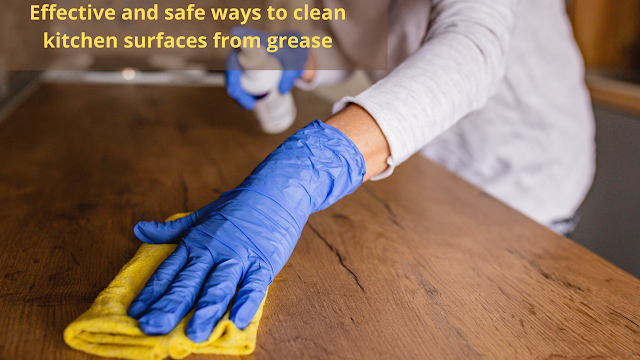- July 20242
- May 20243
- August 20232
- June 20235
- May 20232
- April 20231
- March 20233
- February 20234
- January 20234
- December 20224
- November 20223
- October 20222
- September 202210
- August 20221
- July 20222
- June 20226
- May 202212
- April 202213
- March 202219
- February 202217
- January 202218
- December 202119
- November 202118
- October 202132
- September 202135
- August 202138
- July 202143
- February 20213
- January 20217
- December 20208
- November 20206
- October 20208
- September 20208
- August 20208
- July 20208
- June 20206
- April 20194
- March 20194
Labels
- Affiliate
- Affiliate Marketing
- Android
- Bitcoin
- blogger Tutorial
- Cashback
- Computer
- Crypto
- Cryptocurrency
- DIY Tutorials
- Earn Money
- Ecommerce
- Email MArketing
- facebook tutorial
- Family
- Gadgets
- Gamer and Console
- Hobbies and skills
- Home and backyard
- Home building
- Home electronics
- Home furnitures
- Home Gardening
- Homework
- House care
- How to
- How to build
- How to write
- infos
- Insurance
- internet
- Internet and security
- internet Marketing
- internet Services
- Investing
- iphone
- KDP Interior Templates
- Life Care
- life Hacks
- Linux Tutorial
- Mac
- make Money
- Online Solutions
- Pet care
- Products Review
- Reviews
- Search Engine
- Security
- SEO
- shopping
- Smart Home
- smartphone
- social media
- Software Tutorial
- SSEO
- Tech Problem
- VPN
- Wallet and Money
- Web Hosting
- Web Tutorials
- Windows
- work
- Work online
- Youtube Review
- Youtube Tutorial
- Youtubers Tutorials
Dealing with visitors links in blogger comments Are you bothered by the links that visitors put inside your blog comments? I will offer you a set of solutions to deal with it without having to delete it. The comments section affects one way or another the arrangement of your blog and the strength of its archiving. We know that one of the simplest ways to bring visits to the site is to publish its link in a group of places, including comments. This strategy is usually beneficial to the comment owner, but it is likely to be harmful to the owner of the site as losing visitors instead of browsing the rest of the content. Perhaps some will ask a question why I do not delete the comments in which the links are manual, the reason is simply that sometimes visitors add comments related to the post and of high quality, but add defamatory links to it, in this case, we do not want to delete all the comment, but we want to hide the link only. I will present to you a set of different scripts, each o...
10 Best Video Editing App For smartphone
with Video Editors Apps you can edit videos for better quality like its brightness, contrast, orientation, or, you'll want to feature something to form the photos look catchy and make it more fantastic. Video content is on the increase . Especially when it involves promoting products to customers. Video editing apps are one among the heaviest tasks that a tool can perform. a touch Video editing can dramatically increase the impact of your film. You might have already got a high-quality camera built into your smartphone, but editing your raw footage and preparing it for publication requires a third-party mobile video editing apps. Best Video Editing App For Android and iphone 1. Adobe Premiere Rush An app which has made a distinct segment for itself within the arena of video editing apps. This too may be a free app which helps you to craft high-quality videos at a really fast rate. This app features a sort of music, effects, and tools which can facilitate in your video editi...
Best money saving tips for student
Best money saving tips for student It is easy to induce caught within the rush of things once you are in college. within the midst of studying, part-time jobs, socializing and extracurricular activities that you simply have, you're presumably to forget one among the foremost important things, which is straightening out your finances. Here are some recommendations on how you'll economize as a student: 1. Plan ahead. If possible, do that even before you progress into your dormitory . Check if you're eligible for scholarships and other grants before signing up for any sort of student loan. Construct a income . First, where does one expect to get money from? Make an inventory of your “income”, be it from your parents, your student loan or your part-time job. Then forecast your expected monthly or weekly expenses for food, books, etc. Once you've got put aside a budget, be strict with yourself and stick with it. You will never know what unexpected e...
قائمة الأكثر شعبية
Dealing with visitors links in blogger comments
Dealing with visitors links in blogger comments Are you bothered by the links that visitors put inside your blog comments? I will offer you a set of solutions to deal with it without having to delete it. The comments section affects one way or another the arrangement of your blog and the strength of its archiving. We know that one of the simplest ways to bring visits to the site is to publish its link in a group of places, including comments. This strategy is usually beneficial to the comment owner, but it is likely to be harmful to the owner of the site as losing visitors instead of browsing the rest of the content. Perhaps some will ask a question why I do not delete the comments in which the links are manual, the reason is simply that sometimes visitors add comments related to the post and of high quality, but add defamatory links to it, in this case, we do not want to delete all the comment, but we want to hide the link only. I will present to you a set of different scripts, each o...
10 Best Video Editing App For smartphone
with Video Editors Apps you can edit videos for better quality like its brightness, contrast, orientation, or, you'll want to feature something to form the photos look catchy and make it more fantastic. Video content is on the increase . Especially when it involves promoting products to customers. Video editing apps are one among the heaviest tasks that a tool can perform. a touch Video editing can dramatically increase the impact of your film. You might have already got a high-quality camera built into your smartphone, but editing your raw footage and preparing it for publication requires a third-party mobile video editing apps. Best Video Editing App For Android and iphone 1. Adobe Premiere Rush An app which has made a distinct segment for itself within the arena of video editing apps. This too may be a free app which helps you to craft high-quality videos at a really fast rate. This app features a sort of music, effects, and tools which can facilitate in your video editi...
4 Best E-Commerce Platforms to Sell Your Products On
4 Best E-Commerce Platforms to Sell Your Products On Did you spend a lot of time working on a new product? Then you spent the time thinking about which online trading platform or marketplace you should start selling this product on? Today I have collected for you the best e-commerce platforms that you should target to sell your products in 1- Amazon platform: Amazon is the world's largest e-commerce platform, with revenue of $177.9 billion in 2017 and net income growth of 27.8%. Be very careful, as the competition on this platform is very high, as there are millions of products of all kinds and in all sections and disciplines, some statistics mention that there are more than 5 million sellers on the Amazon platform , and there are approximately 10,000 sellers who have achieved sales of one million dollars per year or more, with more than 100,000 sellers with annual sales of $100,000. Unfortunately, not all Arab countries are allowed to deal with the Amazon platform. Start ...
Tips for removing ink from white clothes
Tips for removing ink from white clothes Ink stains on white or light clothes; What are the appropriate cleaning methods to get rid of them, especially that the mentioned stains are annoying, because they distort the appearance of clothes, and may damage their tissues, in case of neglecting to take care of them. Methods for removing ink stains from white clothes Rinse the stain under cold water to remove as much ink as possible. Fill a basin with hot water, pour a small amount of liquid detergent without bleach, in addition to the possibility of using ammonia. Stir the two ingredients in the water, immersing the garment in it. The stain is rubbed well, with fingers, and the garment is left in the water for 30 minutes to an hour. If the stain is stubborn, it can be left to soak overnight, with occasional rubbing. When the stain is gone, wash the garment as usual, after rubbing the stain with more washing-up liquid. Air-dry the piece of clothing. Aids in cleaning ink from white clothes B...
5 Reasons to Convert a Small Business to E-Commerce
5 Reasons to Convert a Small Business to E-Commerce No matter what size you define for your business (small, medium, or large), there are plenty of ways to help you determine that size, for example your brand, products quality, The size and percentage of reach, the target segment (ie the audience), capital, geographical and social spread, But the most important question (which is also the purpose of any business) is, How do grow and expand beyond any of these limits? It is electronic commerce, it is the perfect choice for any company, especially the small one, so why not take the initiative and start working on e-commerce or e-work (including marketing and e-presence), let's find out the reasons. 1- A larger work base: Expanding the scope of growth is very important for small companies before large ones, especially when switching to e-commerce, due to the widening rates of unlimited access to the online store on the Internet. 2- Preference for selection: The number of online shop...







.png)
.png)
.png)
.png)